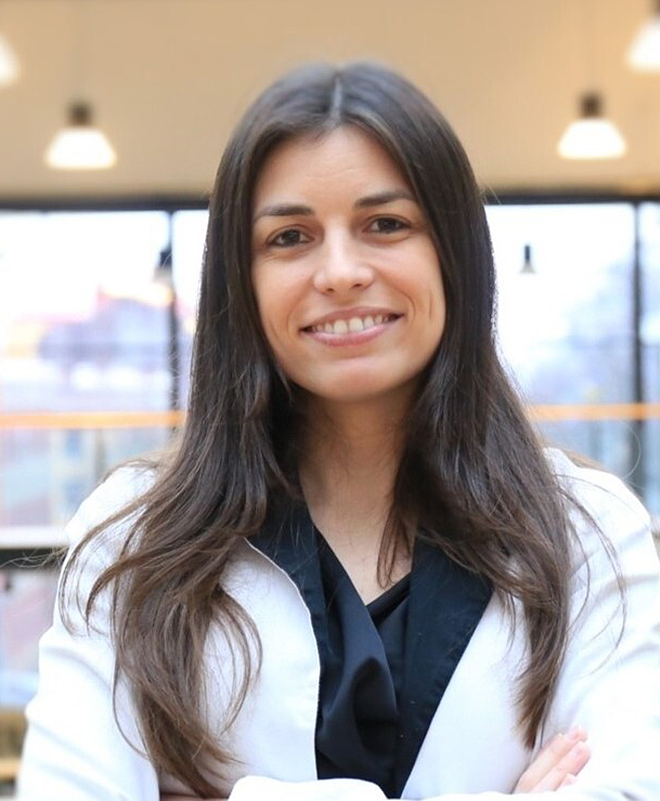
Tatiane Abreu Dall’Agnol started at MSC in autumn of 2021 as an associate. She has an already impressive background of nine years as a psychiatrist before changing path to a more business-oriented role within the healthcare space. Tatiane brings a deep understanding of medicine coupled with studies in business and strategy making her a great asset for MSC as well as our clients.

Can you tell us about your background?
I have a quite diverse background, which I believe reflect parts of my personality and curiosity as well as a willingness to do something meaningful with life. I am from Brazil, and it was there I started my career by studying medicine with a specialization in psychiatry. Mental health and the understanding of human behavior is fascinating to me, and I am very interested in how society is shaped by it.
I worked as a physician for nine years in Brazil and I became more and more interested in management, protocols implementations and medication expenses during this time. I noticed that good strategic planning behind the healthcare sector could make an impact on peoples’ quality of life. It was this “macro” approach that interested me and took me down a different path. I started studying economics then finance and investments, and a few years later started the master’s program ‘Business creation and entrepreneurship in biomedicine’ at the University of Gothenburg. During my master’s degree, I gained experience as an intellectual property consultant for life sciences businesses, as well as in business development and competitive intelligence of a pharmaceutical company. Ultimately, I found the perfect environment to combine the medical and business fields efficiently at MSC.
“I am proud of not being afraid of change, starting over, adjusting. Even though I had a great career as a psychiatrist, the fact that I could “switch” to the business strategy side of life science provided me with so many rich experiences, and I am very grateful for that. .”
Why did you choose to join MSC?
During my master’s program at the University of Gothenburg, I had the chance to attend a lecture about positioning of life science companies given by the MSC team. At the time, they also presented the company, type of projects done and how their consultancy services could benefit biotechnology and pharma companies. I felt it was the type of environment where I could connect my medical knowledge with the entrepreneurial and strategic planning side that I had been gaining experience in over the last few years. Now, after only a couple of months at the company I know it was the best choice and, the practical work is even better than I presumed.
What do you look forward to most in joining MSC?
I find it very motivating to support our clients in their business decisions and see the result of our work making an impact on the company and potentially on patients’ lives. So, I am looking forward to seeing even more targets achieved: business deals supported by our valuations, partnerships through our connection, indication analyses becoming clinical trials, just to mention a few. It is a very exciting process because we make the client’s goal our own; and every achievement becomes a stimulating turning point.
What is the best career advice you have ever received?
A great Brazilian philosopher called Mario Sergio Cortella used to say that a good way of understanding if your work has a deeper purpose for you is to differentiate stress and tiredness: An intense effort will naturally make you feel tired, but stress is the result of an effort you do not want to make. I have allowed myself to eventually feel tired, it is part of hard work. But stress is something I have not experienced.
By following this idea, I am proud of not being afraid of change, starting over, adjusting. Even though I had a great career as a psychiatrist, the fact that I could “switch” to the business strategy side of life science provided me with so many rich experiences, and I am very grateful for that. With the transitions I had to adapt to a new environment, new routine, new climate, new people… And it has brought me the opportunity to learn more and more, not just about the life science market, but also about life.
What do you enjoy doing in your spare time?
I love to spend time with friends, cooking and drinking good wine. I’ve been trying to improve my running pace, and the half-marathon Göteborgsvarvet was a great first experience. But I also enjoy long walks in the woods. Traveling around and getting to know different cultures and flavors are also a passion of mine.
Tatiane Abreu Dall’Agnol, Associate
LinkedIn >


